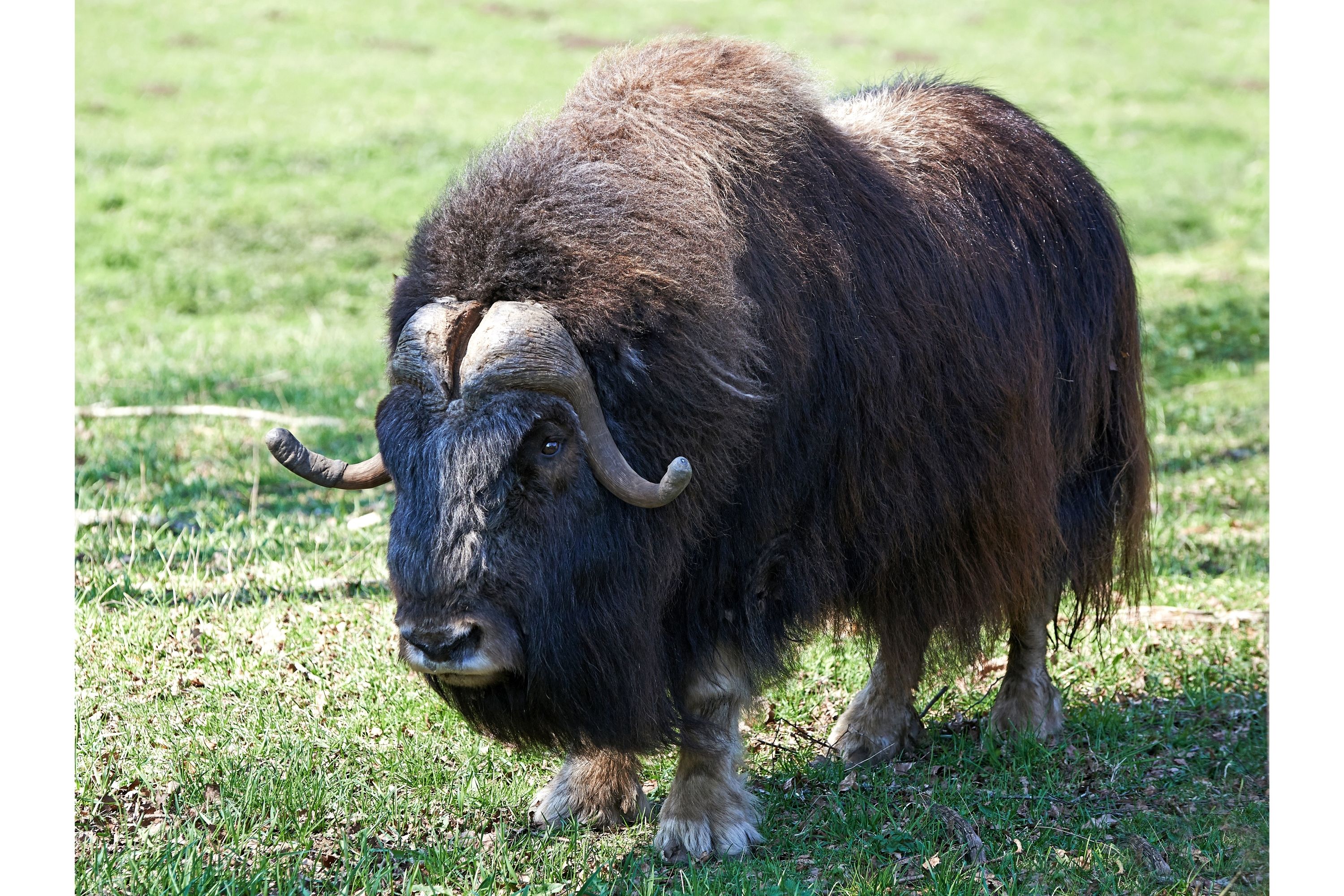Musk ox
(Ovibos moschatus)

Description
The muskox (Ovibos moschatus, in Latin "musky sheep-ox"), also spelled musk ox and musk-ox, plural muskoxen or musk oxen (in Inuktitut: ᐅᒥᖕᒪᒃ, umingmak; in Woods Cree: ᒫᖨᒨᐢ, mâthi-môs, ᒫᖨᒧᐢᑐᐢ, mâthi-mostos), is a hoofed mammal of the family Bovidae.Native to the Arctic, it is noted for its thick coat and for the strong odor emitted by males during the seasonal rut, from which its name derives. This musky odor has the effect of attracting females during mating season. Its Inuktitut name "umingmak" translates to "the bearded one".Its Woods Cree names "mâthi-môs" and "mâthi-mostos" translate to "ugly moose" and "ugly bison", respectively. Muskoxen primarily live in Greenland and the Canadian Arctic of the Northwest Territories and Nunavut, with reintroduced populations in the American state of Alaska, the Canadian territory of Yukon, and Siberia, and an introduced population in Norway, part of which emigrated to Sweden, where a small population now lives. The muskox is in the subtribe Ovibovina (or tribe Ovibovini) in the tribe Caprini (or subfamily Caprinae) of the subfamily Antilopinae in the family Bovidae. It is more closely related to sheep and goats than to oxen; it is placed in its own genus, Ovibos (Latin: "sheep-ox"). It is one of the two largest extant members of the caprines, along with the similarly sized takin. While the takin and muskox were once considered possibly closely related, the takin lacks common ovibovine features, such as the muskox's specialized horn morphology, and genetic analysis shows that their lineages actually separated early in caprine evolution. Instead, the muskox's closest living relatives appear to be the gorals of the genus Naemorhedus, nowadays common in many countries of central and east Asia. The vague similarity between takin and muskox is therefore an example of convergent evolution. Both male and female muskoxen have long, curved horns. Muskoxen stand 1.1 to 1.5 m (4 to 5 ft) high at the shoulder, with females measuring 135 to 200 cm (4.4 to 6.6 ft) in length, and the larger males 200 to 250 cm (6.6 to 8.2 ft). The small tail, often concealed under a layer of fur, measures only 10 cm (3.9 in) long. Adults, on average, weigh 285 kg (630 lb) and range from 180 to 410 kg (400 to 900 lb). The thick coat and large head suggest a larger animal than the muskox truly is; the bison, to which the muskox is often compared, can weigh up to twice as much.
Taxonomic tree:







